The Biosfera is a glass and steel sphere in Genoa, designed by the famous architect Renzo Piano. It houses a thriving tropical ecosystem where exotic birds and lush plants coexist. Its unique round shape makes it a standout feature in the Porto Antico landscape, directly opposite the Aquarium of Genoa. The Biosfera is home to over 150 distinct wildlife varieties of both animal and plant species, and it is definetly worth a visit.
Table of Contents
About Genoa Biosfera
The Biosphere is a massive glass and steel sphere in Genoa’s Porto Antico, the old port area. It houses a tropical garden home to over 150 birds and other animals. Visitors can explore the interior path and learn about the endangered ecosystem due to human exploitation.
ORGANISE YOUR TRIP TO GENOA
Save money with the Genoa City Pass, unlocking a wealth of cultural experiences and seamless travel within the city. It provides access to several museums and free public transport during its validity period.
Stay connected in Italy with an Airalo eSim, the best online solution for data and phone coverage on your trip to Genoa.
The Biosphere attracts many tourists yearly due to its exotic birds, such as parrots, scarlet ibises, and turtles. However, the unique feature of the Biosphere lies in the incredible structure designed by architect Renzo Piano. The sphere visually impacts Genoa’s Old Port and has some hidden features that allow the delicate ecosystem to thrive.
The floating structure uses seawater for a natural conditioning system that maintains a tropical microclimate with high humidity inside the sphere. On the architectural side, the steel bars that create the sphere reflect the meridians and parallels of the globe.
A visit to the Biosphere is about more than admiring the fauna and flora of the tropical forest. The unique shape of the sphere serves as a constant reminder of the impact of human actions on the delicate ecosystems of the globe in different latitudes.
Genoa Biosfera: what’s on
The Biosfera entrance ticket allows you to enter and explore the interior of the glass and steel sphere. You can stay inside as long as you like and take multiple laps around the circular path. Still, it usually takes around half an hour to see everything.
You might occasionally encounter a parrot during your visit. Still, most of the time, you’ll have to keep an eye out to spot the various animals. Due to the Biosphere’s diverse ecosystem, which is home to over 150 different species of flora and fauna, it’s nearly impossible to recognise them all.
Birds living in the Biosfera
The Biosfera houses various bird species, including a Moluccan Cockatoo parrot named Dust, the favourite among visitors. Dust, trained by the Biosfera staff, loves to play by jumping from log to log when called. He also enjoys posing for photographs on the visitor trail.
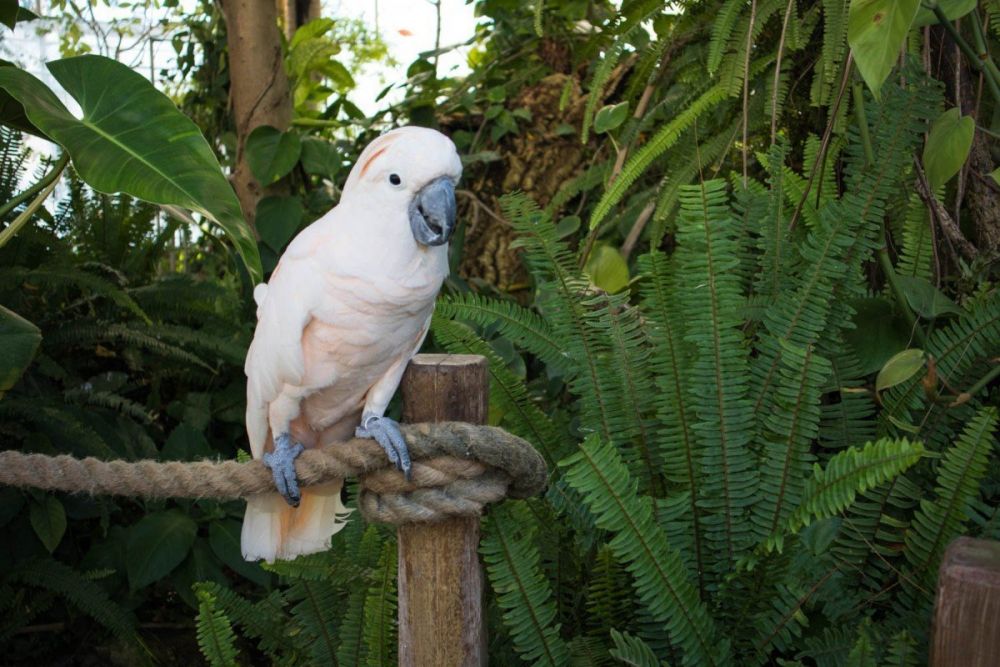
Another bird that catches the eye in the Biosfera is the Scarlet Ibis, named for its bright pink feathers. During my visit, I saw five males and two females standing together in groups among the green leaves. In their natural habitat of South American mangrove forests and wetlands, they feed on crustaceans, small fish, and molluscs. However, in the Biosfera, they await mussels, shrimps, and fish served in a feeder designated for their mealtimes.
Four other bird species coexist in the Biosfera: a Superb Starling, a family of Diamond Tortoises, a Chinese Quail, and Weaver Birds. Although I couldn’t identify them all, observing their behaviour was fascinating. Some species were calmer, while others marked their territory, like the Superb Starling, which fluttered all over the sphere to do so.
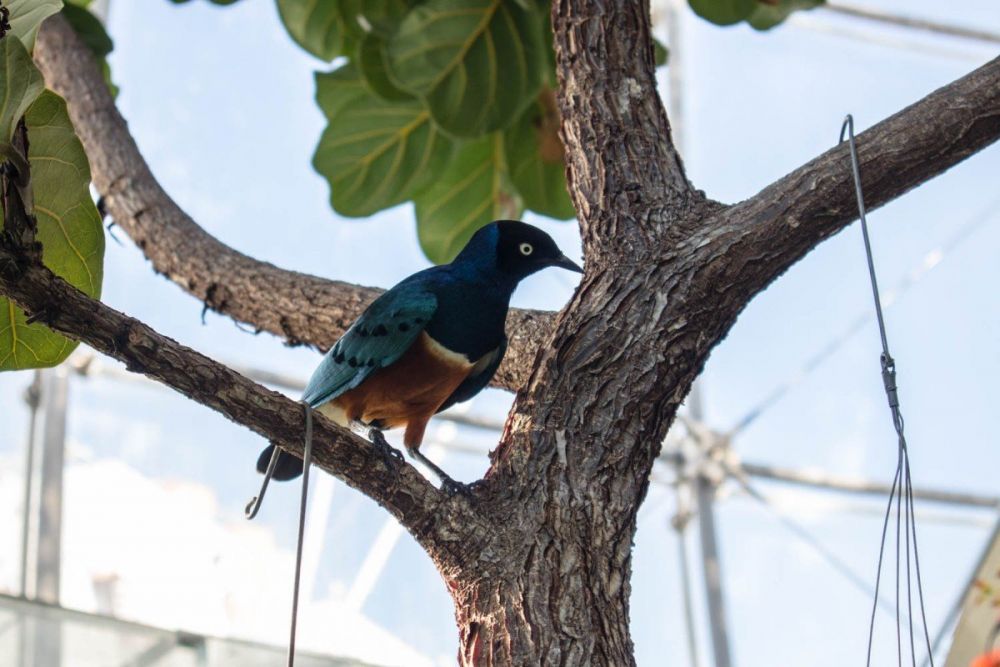
Other animals living in the Biosfera
During my visit to the Biosfera, I discovered that besides birds, which are a popular attraction, there are also turtles, reptiles, fish, and insects living there. One of the most fascinating insects I encountered was the Annam’s stick insects, which are kept in shrines to protect them from insect-eating birds. These insects are unique because they resemble wooden sticks, allowing them to blend in with their surroundings.
However, I also learned that non-native animal species can threaten ecosystems. For example, the American bog turtle is an aquatic turtle introduced to Europe’s rivers and lakes. This species has almost caused the extinction of local species. As a result, its trade and breeding have been banned throughout Europe.
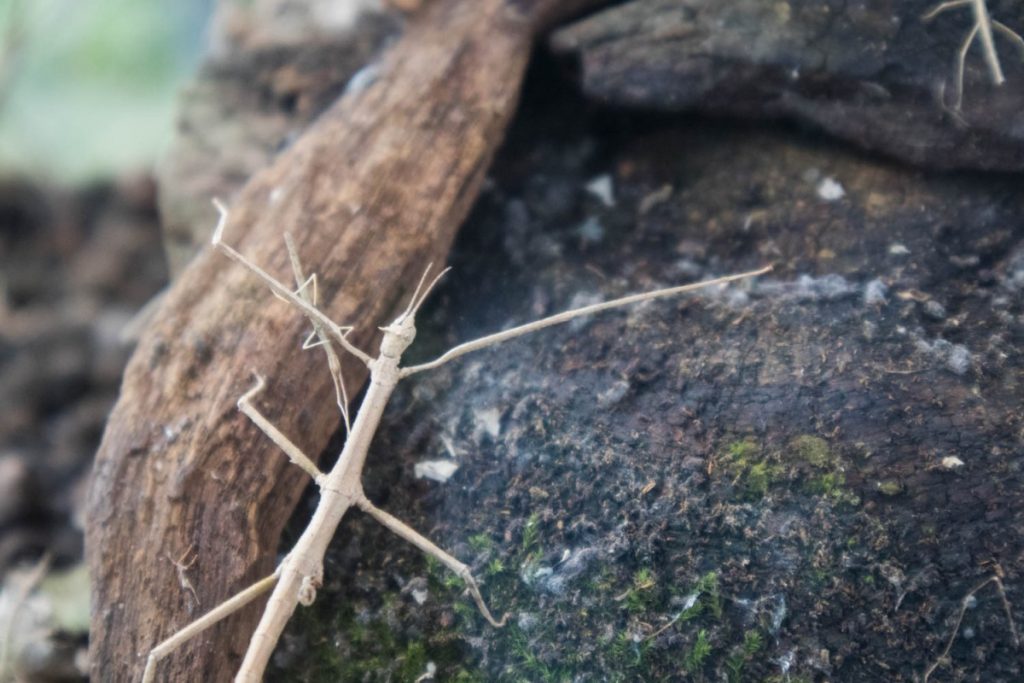
Plants in the Biosfera
In the Biosfera, there are various species of orchids, including the Phalaenopsis Amabilis, which grows naturally in Southeast Asia, and the Dendrobium Compactum, which originates from East Asia. The Passion Flower is another plant with gorgeous flowers within this ecosystem. Additionally, the Biosfera houses plants like coffee, vanilla, cinnamon, tamarind, and banana, traditionally grown for their fruits.
Thanks to the Biosfera staff, I learned about the natural significance of tree ferns. They are ancient plant species that existed before the appearance of dinosaurs. Unlike other plants, they have no roots and only root hairs to absorb nutrients.
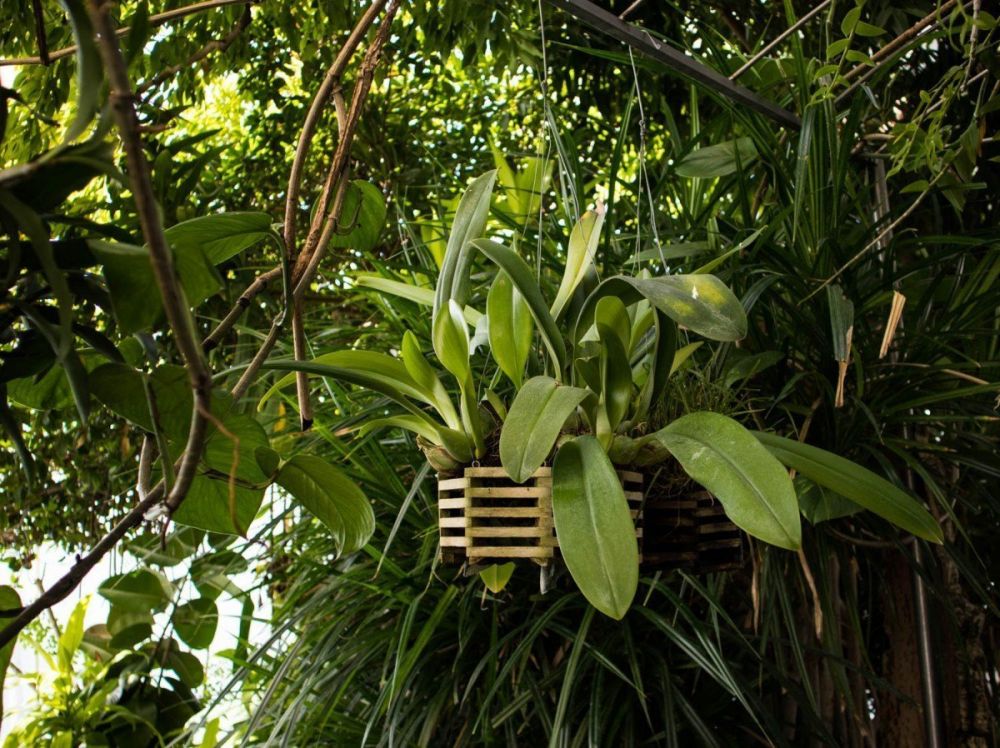
The Genoa Biosfera’s architecture
The Biosfera is an architectural project designed by Renzo Piano and built in 2001 on the occasion of the G8 summit in Genoa. It was not Renzo Piano’s first project in Genoa as he had previously overseen the redevelopment of Genoa’s old port, the Porto Antico, and the construction of the Bigo Panoramic Lift for the 1992 Expo.
The Biosfera’s structure is inspired by the globe, with 12 parallels and 32 meridians forming 336 glass modules. Despite weighing 60 tonnes and having a diameter of 20 metres, the building creates an incredibly bright and light environment. The architect described it as ‘a very light giant, a beautiful exercise in structural design’.
Each detail of the Biosfera’s construction is part of an overall mechanism ensuring the maintenance of the tropical ecosystem. The length and inclination of each element contributed to the form and function of the Biosfera, making its construction a work of utmost precision.
To maintain the tropical microclimate inside, the Biosfera relies on an air conditioning system that uses seawater and the movement of inner sails that follow the sun, shielding excess light. This mechanism ensures that the temperature varies from 30° in summer to 14° in winter while maintaining a humidity level of 60%.
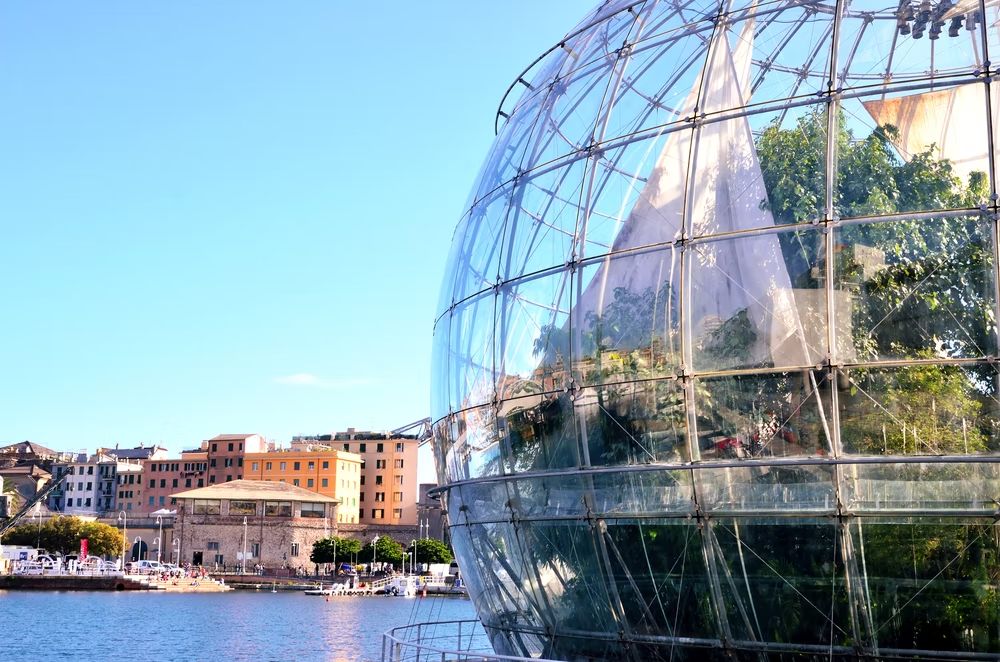
Practical information for visiting the Genoa Biosfera
The Biosfera is a beautiful place to explore the flora and fauna of tropical forests. By visiting it, you can get up close with over 150 different species of animals, learn to appreciate them, and contribute to protecting their habitats, currently threatened by human activities.
During your visit, I recommend wearing layered clothing. The Biosfera has a tropical microclimate, which is warmer and more humid than the Mediterranean climate of Liguria.
Since the Biosfera covers such interesting topics, it’s an excellent destination for families with children. You can also combine your visit with trips to the Aquarium of Genoa and the Bigo Panoramic Lift for a fun day out. They are just a few steps away.
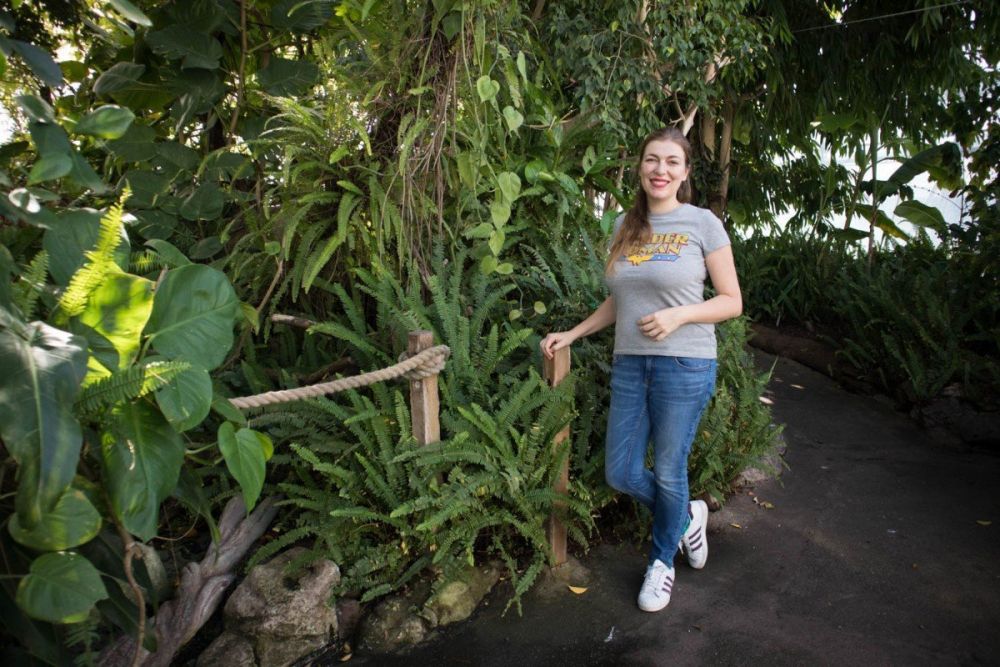
How much the Biosfera tickets cost
To visit the Biosfera in Genoa, you can see it alone or along with other attractions in Porto Antico. If you want to visit the Aquarium, buy a combination ticket online for Biosfera and Aquarium of Geona. For the Biosfera only, the entrance ticket costs €5, and you can purchase it online.
How to get to the Biosfera
The entrance to the Biosphere is right next to the Acquario di Genova. You cannot miss it because the sphere’s structure is scenic and recognisable from afar.
Biosfera
Ponte Spinola
16126 Genova
Where to stay in Genoa
Genoa offers a variety of hotels and B&Bs to choose from. I recommend the Olympia Hotel, a family-run hotel located in the heart of Genova in a historic Art-Nouveau building. For a luxurious experience, the Hotel Bristol Palace features an impressive elliptical staircase leading to its elegant rooms decorated with antique furniture. If you’re on a budget, the Hotel Nologo offers colourful rooms, each named after a music genre, conveniently located near Genova Brignole Station.
Feel free to comment with your impressions of the Biosfera in Genoa and whether you were more intrigued by Renzo Piano’s visionary architecture or the incredible tropical environment.
